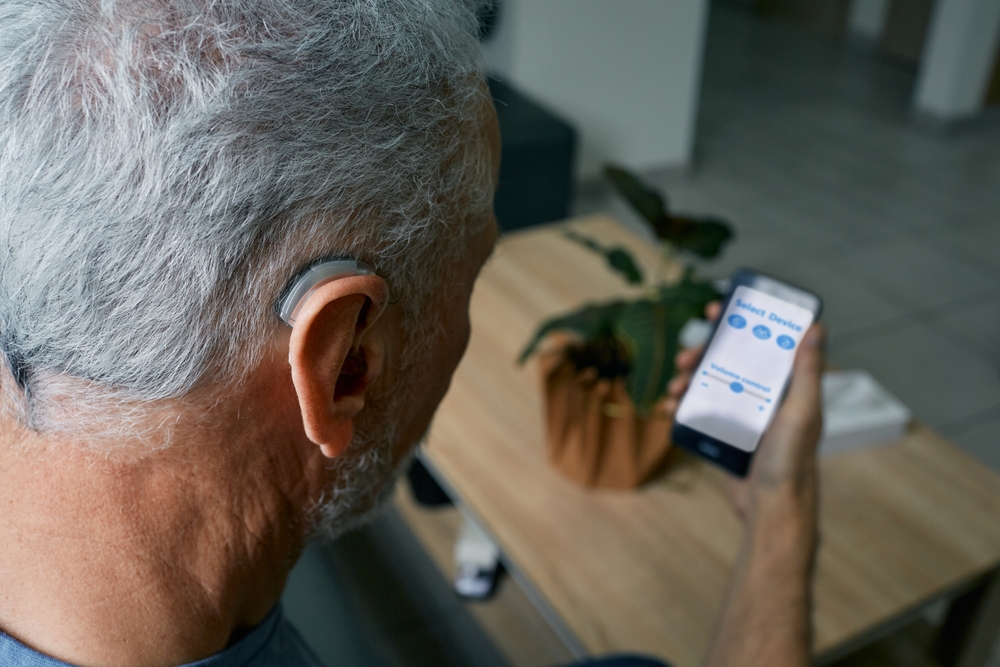Modern, state-of-the-art hearing aids are changing the way we think about wearing assistive technology. Get the facts regarding these valuable devices. Active adults have discovered “hearables” provide a better listening experience than their predecessors. Hearables are also comfortable, technologically-advanced, capable of syncing with other devices, as well as compatible with active lifestyles.
The following are four hearing aid facts you may not have previously known:
1. Two are always better than one
Harry Nilsson of Three Dog Night was correct – “one is the loneliest number.” That’s especially true when it comes to hearing aids. Whether you’re playing soccer, shopping at a flea market, or riding a jet-ski, living an active lifestyle necessitates being able to move confidently and freely.
Your ears work together to accomplish freedom of movement. Losing your hearing in one ear will seriously throw you off your game. It becomes harder to tell where sounds are coming from, which is disorienting.
If you’re only wearing one hearing aid, you may be putting yourself in danger when you’re jogging and can’t hear cars coming toward you. Single-sided hearing is also associated with vertigo, which can make you more accident-prone.
Additionally, your ears work together to understand language. If you’re wearing a hearing aid in one ear, you’ll struggle more often because the other ear is working harder to hear sounds.
To ensure your ears are the power couple they’re supposed to be, wear two hearing aids.
2. Optimal hearing in all environments
Modern hearing devices can be optimized for various hearing environments. Do you love theater, sporting events, or fine dining? There’s a setting on your hearing aids for each of these venues. Do you need to hear the traffic and people around you while jogging? There’s a setting for that, too.
A quiet conversation in a noisy venue? A noisy conversation in a large room? An individual talking softly on the phone? Your hearing aid can handle those situations easily.
It takes some practice, but adjusting your hearing aids for each situation will make a dramatic difference.
You’ve never shied away from a challenge. The more you use your hearing aids, the more of an expert you’ll become.
3. Hearing aids will keep you sharp
As an active person, the last thing you want to think about is cognitive decline. You see others struggling with the credit card scanner at the store, having trouble driving, or constantly forgetting things. You’re compassionate, but you’re also really glad that’s not you.
Studies show untreated hearing loss is directly correlated to how quickly people lose their cognitive abilities. Individuals accustomed to healthy hearing disengage from their friends and families after hearing loss begins.
Struggling to hear causes fatigue. Over time, the minds of those suffering from hearing loss start to slow down. It becomes difficult to learn new things or adapt to changes. Individuals with hearing loss may become irritable and isolate themselves from the people they love. They also lose the ability to stay active.
The worse an individual experiences hearing loss is, the faster the rate of cognitive decline.
- Mild hearing loss will double the rate of cognitive decline.
- Moderate hearing loss will triple the rate of cognitive decline.
- Severe hearing loss will quintuple (5x) the rate of cognitive decline.
There’s good news, however. Wearing your hearing aids can decrease the progression of cognitive decline. You can stay more mentally sharp and physically active by simply wearing your hearing aids.
4. Hearing aids aren’t one-size-fits-all
Hearing aid fittings aren’t simply about improving your hearing, the devices should also fit your specific lifestyle. Talk to your hearing specialist about the activities you enjoy to help determine which devices best fit your unique lifestyle.
Do you surf, ski, or swim? Then you’ll need waterproof hearing aids. If you enjoy sport fishing, boating, or walking on the beach, you may only need water-resistant hearing aids.
Hearing aids that aren’t waterproof or water-resistant will be damaged if you get them wet. Check your hearing aid manual before going into the water.
Hearing aids utilize Bluetooth® technology, which allow you to wirelessly connect to your smartphone, TV, or stereo system. You can now enjoy music on the go without trying to fit headphones over your hearing aids.
Stay active and healthy by getting and wearing hearing aids that don’t get in the way of your active lifestyle. Talk to a hearing specialist as soon as possible to learn the facts and determine how you can best improve your listening experience.


